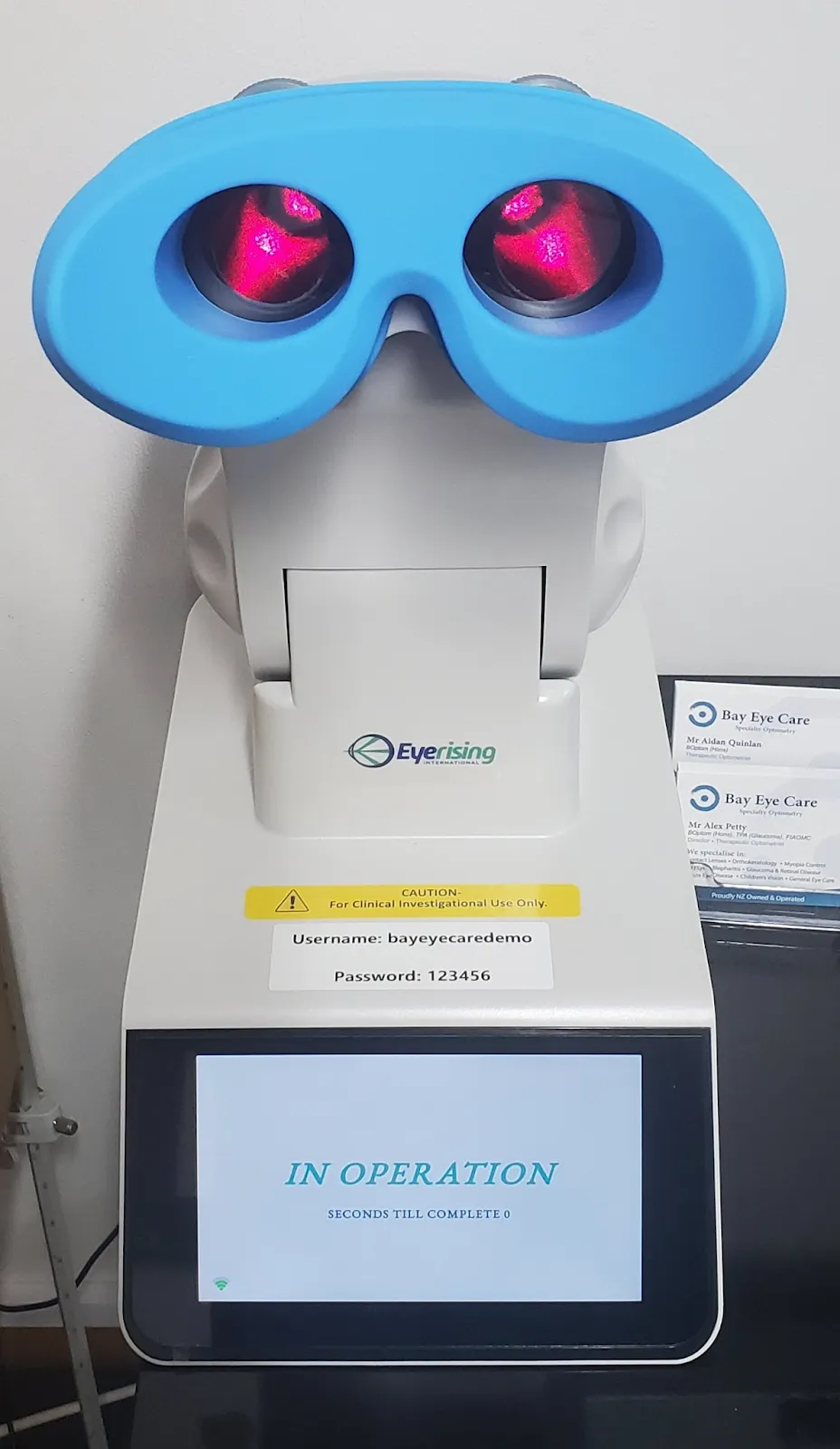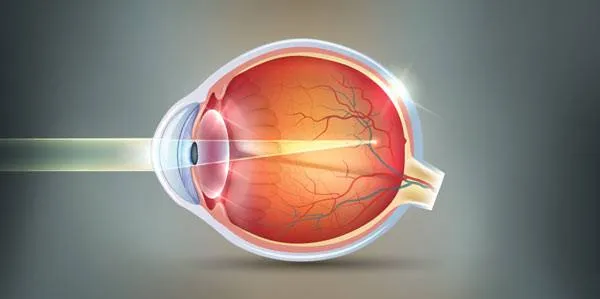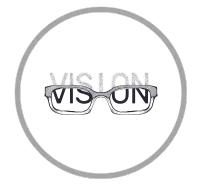Understanding Myopia
The Latest Innovations in Myopia Treatment
FSDAVCFEBFEVSDDVFSD
FSDAVCFEBFEVSDDVFSD
FSDAVCFEBFEVSDDVFSD
Potential Revolution of Myopia Management
Waking up one day and noticing that distant scenes have turned into a blur is a common experience for those with myopia, or nearsightedness. Myopia affects millions worldwide, making it difficult to see distant objects clearly while close objects remain sharp. This happens when the eyeball grows too long or the cornea is too curved, causing light to focus in front of the retina. As myopia becomes more prevalent, especially among children and teenagers.
Recent advancements in myopia management include innovative techniques like atropine eye drops, which have shown promise in slowing down the progression of myopia. Additionally, ongoing research into specialized contact lenses and orthokeratology continues to provide new avenues for managing and potentially halting myopia development in its tracks.

Potential Revolution of Myopia Management
Waking up one day and noticing that distant scenes have turned into a blur is a common experience for those with myopia, or nearsightedness. Myopia affects millions worldwide, making it difficult to see distant objects clearly while close objects remain sharp. This happens when the eyeball grows too long or the cornea is too curved, causing light to focus in front of the retina. As myopia becomes more prevalent, especially among children and teenagers.
Recent advancements in myopia management include innovative techniques like atropine eye drops, which have shown promise in slowing down the progression of myopia. Additionally, ongoing research into specialized contact lenses and orthokeratology

continues to provide new avenues for managing and potentially halting myopia development in its tracks.
As researchers delve deeper into understanding the complexities of myopia, new insights into genetic predispositions and environmental factors continue to emerge. These insights are crucial for developing targeted interventions that can effectively manage myopia and prevent its progression in adolescents and young adults.
By integrating cutting-edge technologies and personalized treatment approaches, the field of myopia management is poised to make significant strides in providing tailored solutions that address individual variations in myopia severity and progression. As these advancements unfold, they hold promise not only for improving visual health outcomes but also for enhancing overall quality of life for those affected by this widespread vision condition.
As researchers delve deeper into understanding the complexities of myopia, new insights into genetic predispositions and environmental factors continue to emerge. These insights are crucial for developing targeted interventions that can effectively manage myopia and prevent its progression in adolescents and young adults. By integrating cutting-edge technologies and personalized treatment approaches, the field of myopia management is poised to make significant strides in providing tailored solutions that address individual variations in myopia severity and progression. As these advancements unfold, they hold promise not only for improving visual health outcomes but also for enhancing overall quality of life for those affected by this widespread vision condition.
Causes and Symptoms of Myopia
Myopia, or nearsightedness, is influenced by both genetic and environmental factors. Hereditary factors play a significant role, meaning that if parents or siblings have myopia, there is a higher likelihood of developing the condition. Environmental factors are also important in the onset and progression of myopia. Activities that involve prolonged close work, such as reading, using a computer, or other digital devices, contribute to the development and worsening of myopia.
The modern lifestyle, with increased screen time and reduced outdoor activities, exacerbates this issue. The symptoms of myopia are relatively straightforward but can significantly impact daily life. Individuals with myopia typically experience difficulty seeing distant objects clearly, which can manifest as blurry vision. This often leads to squinting as they try to focus on distant objects.
The Evolution of Myopia Treatment

Myopia treatment has primarily involved the use of prescription glasses and contact lenses. These devices work by refocusing light onto the retina, effectively correcting vision.
However, while these traditional methods provide clear vision, they do not address the progression of myopia.
This has led to the development of more innovative myopia control strategies aimed at slowing or halting the progression of this condition. Surgical options such as LASIK (Laser-Assisted In Situ Keratomileusis) and PRK (Photorefractive Keratectomy) emerged as permanent solutions for myopia.

These procedures involve reshaping the cornea with a laser to allow light to focus correctly on the retina. Although effective in providing long-term correction, these surgeries come with potential risks, including dry eyes, glare, and, in rare cases, vision loss. The need for cutting-edge myopia care that addresses both correction and progression prevention has driven further advancements.
One of the most promising latest myopia treatments is orthokeratology (Ortho-K). Ortho-K uses specially designed contact lenses worn overnight to temporarily reshape the cornea. This not only corrects vision but also slows myopia progression, offering a dual benefit. Another significant development is the use of multifocal contact lenses, which help in innovative myopia control by focusing light in front of the peripheral retina, thereby slowing the elongation of the eye that causes myopia.
Latest Advancements in Myopia Treatment
One of the most significant myopia treatment advancements in recent years is the use of low-dose atropine eye drops. Atropine, a medication traditionally used to dilate pupils, has been repurposed to slow the progression of myopia in children. Clinical studies have demonstrated that low doses of atropine, such as 0.01% to 0.05%, can reduce myopia progression by up to 50%.
This treatment is gaining traction globally, with some countries already approving its use. Myopia research continues to explore the long-term efficacy and optimal dosing regimens of atropine drops, making it a cornerstone of innovative myopia control.Ortho-K involves the use of specially designed rigid gas-permeable contact lenses that are worn overnight. These lenses temporarily reshape the cornea, allowing for clear vision during the day without the need for glasses or contact lenses.
Multifocal lenses are another eye health innovation designed to slow myopia progression. These lenses work by focusing light in front of the peripheral retina, which is believed to reduce the stimulus for eye elongation. This approach has been validated by various clinical studies, showing that multifocal lenses can slow myopia progression effectively.
Navigating Myopia Effectively
Effectively managing myopia begins with a thorough understanding of its causes and symptoms. Myopia, or nearsightedness, is often influenced by both genetic factors and environmental conditions, such as extensive close-up work and limited outdoor activities. Recognizing these factors is the first step toward developing effective treatments and interventions.
The latest myopia treatments go beyond merely correcting blurred vision; they focus on controlling the progression of the condition. Innovative myopia control methods include a combination of traditional and advanced techniques. Regular eye exams play a pivotal role in early detection and management of myopia. Early intervention can prevent the condition from worsening and can mitigate associated risks such as retinal detachment and glaucoma.
One of the significant myopia treatment advancements includes the use of atropine drops. These low-dose drops have been shown to slow myopia progression by up to 50% in children, providing a non-invasive and effective solution supported by extensive myopia research. Orthokeratology (Ortho-K) offers a novel approach where specially designed contact lenses are worn overnight to reshape the cornea, providing clear vision during the day and slowing myopia progression.
Multifocal contact lenses and eyeglasses are another cutting-edge myopia care option. These lenses focus light in front of the peripheral retina, reducing the stimulus for eye elongation, which is a key factor in myopia progression. This eye health innovation not only corrects vision but also addresses the underlying causes of myopia.
Our Conclusion
Managing myopia effectively requires a solid understanding of its causes and symptoms, combined with adopting the latest myopia treatments. Innovations like atropine drops, orthokeratology (Ortho-K), and multifocal contact lenses are making significant strides in myopia control. Regular eye exams are vital for early detection and intervention.
Consult with an eye care professional to discuss these myopia treatment advancements and determine the best approach for your needs. Take proactive steps towards better vision health, and schedule your appointment today. Call us now to book your consultation and explore the best options for advanced myopia care!

Contact Info
Hours of Operation
Mon - Fri | 9:00 AM - 5:00 PM
Sat - Sun | Closed
Holiday Hours: We are closed for the following holidays: New Years Day, Memorial Day, Independence Day, Labor Day, Thanksgiving Day, Christmas Day
© 2026 Kleinwood Vision. All rights Reserved.


